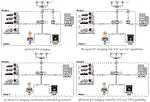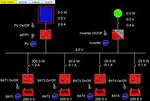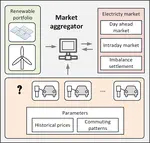 Photo by michael_marais on Unsplash
Photo by michael_marais on UnsplashDeveloped transport infrastructure is considered to be an extremely important factor in the sustainable and balanced development of any country. Trends in traffic and the automotive industry are following technological developments and requirements related to environmental protection and greenhouse gas emissions reduction, and as a result, electric vehicles are increasingly being used instead of motor vehicles. Advances in battery development, energy efficiency, vehicle materials, design itself and better aerodynamics bring electric vehicles into almost everyday use. The development of new technologies, especially in the field of batteries, allows a very short time to charge vehicles, but the main obstacles to the mass use of electric vehicles in road transport are still high cost and underdeveloped charging network in some countries. As with motor vehicles, the basic problem stems from the fact that traffic congestion at rest will not be solved by increasing traffic in motion, but changes in infrastructure are necessary to ensure optimization of both traffic at rest and traffic. The result of the conducted research and development will be a smart-grid charging station for electric vehicles within the construction of a rotary parking system whose main goal is to optimize traffic at rest and traffic in motion. The system called Markoja Smart EV (Smart Electric Vehicle) - MsEVP involves the development of hardware and software components:
Charging station for electric vehicles (created by connecting smart parking systems and vehicle power supply systems); Application for full management of the MsEVP system (by owners and users).
The goal of the project is to develop a smart grid charger for electric vehicles within the construction of a rotary parking lot, which is managed by the platform owner and the end user through the application. Rotating parking takes up space as two parking spaces for vehicles, and by placing the vehicle vertically in several levels they accept up to 16 vehicles, depending on the size of the garage. By integrating EV power technology to each parked vehicle - a solution is obtained that allows vehicles to be charged while parked where the space occupied by vehicles is significantly less than the space required for horizontal parking of an equal number of vehicles. The aim of the project is to gain knowledge and practical experience by cooperating with a scientific research institution in research and development of innovative products. In addition, the project will explore the possibilities of applying innovative technical solutions related to the optimal power supply of rotary parking for electric vehicles and the possibility of using a flexible charging method to support the power grid operation.






